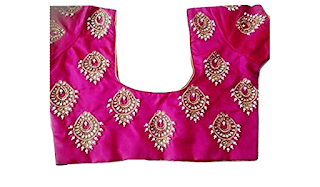Sustainable Fashion's Journey Back from Burnout
Introduction:
In recent years, there has been a rising interest in sustainable fashion as consumers have become more conscious of the environmental and social impacts of the fashion industry. However, the COVID-19 pandemic has had a significant impact on the fashion industry as a whole, leaving many to wonder if sustainable fashion can make a comeback from the brink of burnout. In this article, we will explore the challenges faced by sustainable fashion and discuss potential avenues for its revival.
Can Sustainable Fashion Survive the Pandemic?
The global pandemic has disrupted supply chains and decimated consumer demand for fashion products. As a result, the fashion industry as a whole has experienced a crippling blow. Sustainable fashion, which was already an uphill battle due to its higher production costs and limited availability, is facing even greater challenges. However, despite these obstacles, there is still hope for a sustainable fashion revival.
Overcoming Perception Challenges
One of the main challenges for sustainable fashion is changing consumer perceptions. Many people still associate sustainable fashion with dull and boring designs, and believe that it is unaffordable. To combat this, sustainable fashion brands need to focus on creating stylish and trendy designs that appeal to a wider audience. By showcasing the fashion-forward aspects of sustainable fashion, brands can attract more consumers and challenge the notion that sustainability equates to frumpy clothing.
Embracing Technology and Innovation
Another crucial factor in the revival of sustainable fashion is embracing technology and innovation. Sustainable fashion brands can harness the power of technology to create more eco-friendly manufacturing processes and materials. From using recycled fabrics to implementing zero-waste production techniques, technology can help reduce the environmental impact of fashion. Innovation in materials, such as the development of biodegradable fabrics, can also contribute to a more sustainable fashion industry.
Collaboration for Change
To tackle the challenges faced by sustainable fashion, collaboration is key. Brands, industry experts, and consumers need to come together to drive change. This collaboration can take the form of partnerships between sustainable fashion brands and traditional fashion retailers, creating a bridge between the two and allowing for a wider reach. Additionally, educating consumers about the environmental and social benefits of sustainable fashion is crucial. By working together, sustainable fashion can build a stronger foundation and overcome the burnout it currently faces.
Government Support and Policy Changes
Government support and policy changes also play a vital role in the revival of sustainable fashion. Governments can incentivize sustainable practices within the fashion industry through tax breaks and grants for eco-friendly initiatives. They can also enforce stricter regulations on harmful practices, such as the use of toxic chemicals in textile production. By creating a supportive framework, governments can contribute to the growth and sustainability of the fashion industry as a whole.



Comments
Post a Comment